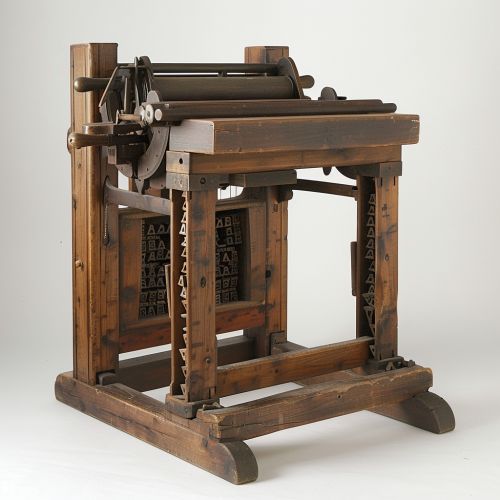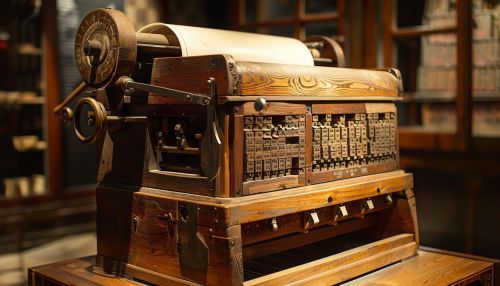Printing press
Origins of the Printing Press
The printing press is a device that allows for the mass production of uniform printed matter, mainly text in the form of books, pamphlets and newspapers. Created in China, the printing press revolutionized society there before being further developed in Europe in the 15th century by Johannes Gutenberg and his invention of mechanical movable type.
Invention in China
The earliest known form of printing as applied to paper was woodblock printing, which appeared in China before 220 AD. Later developments in printing technology include the movable type invented by Bi Sheng around 1040 AD and the press invented by Johannes Gutenberg in the 15th century. The Chinese inventor Bi Sheng made movable type of earthenware circa 1045, but there are no known surviving examples of his printing. Around 1450, in what is commonly regarded as an independent invention, Johannes Gutenberg invented movable type in Europe, along with innovations in casting the type based on a matrix and hand mould.


Gutenberg's Invention
Johannes Gutenberg's work on the printing press began in approximately 1436 when he partnered with Andreas Dritzehn—a man who had previously instructed in gem-cutting—and Andreas Heilmann, owner of a paper mill. It was not until a 1439 lawsuit against Gutenberg that official records exist; the court document says that Gutenberg was able to spread information across Europe, starting the Printing Revolution. Gutenberg's press allowed more Bibles, books and music to reach more people.
Impact on Society
The invention of the printing press had a profound impact on society. The ability to reproduce works of literature on a large scale led to more widespread literacy among people of lower socioeconomic status. This democratization of knowledge was a significant factor in the spread of the Reformation, the Renaissance, and the Scientific Revolution. It is also considered a major contributing factor to the development of the modern era.
Modern Developments
In the 19th century, the replacement of the hand-operated Gutenberg-style press by steam-powered rotary presses allowed printing on an industrial scale. The use of movable type in printing was superseded in the 20th century by offset printing, and then by digital printing.
